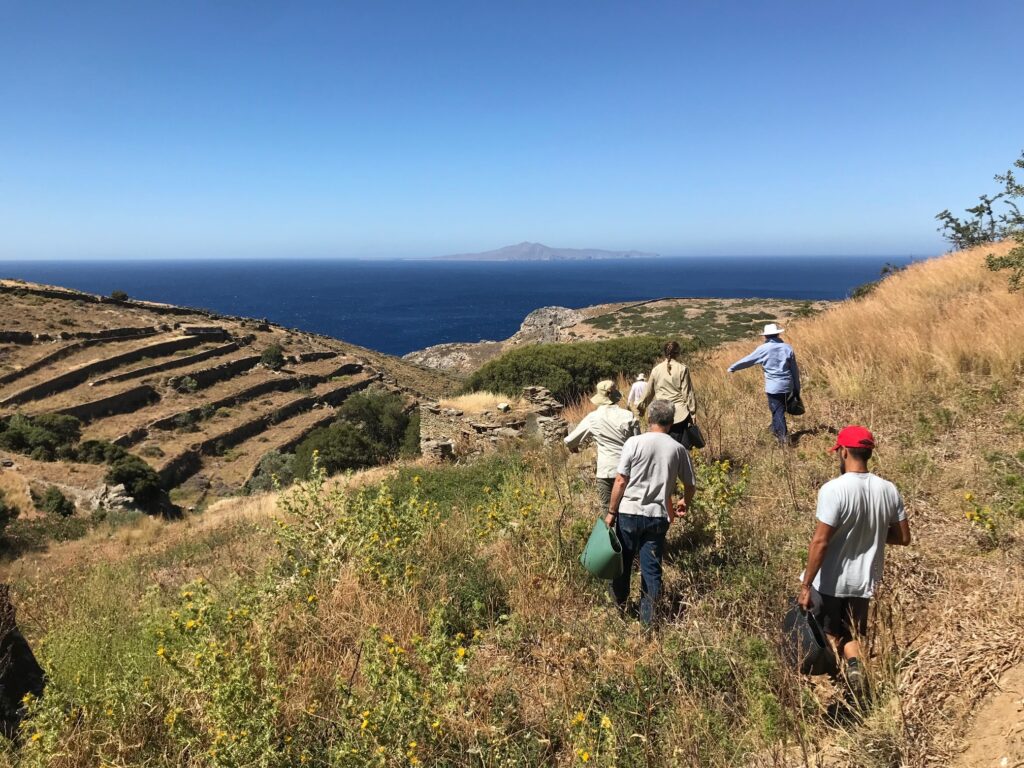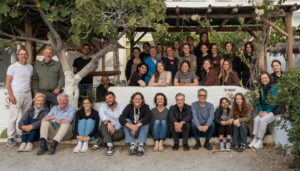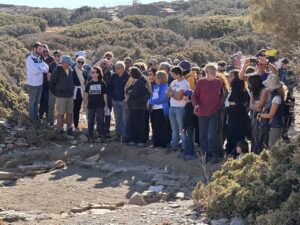by Paul Donnelly
The co-directors and team are sprinting (Olympic fashion) towards the next season at Zagora, with the 2024 excavations nearly upon us. Permits and permissions have been granted from the Hellenic Ministry, students have been briefed, trowels ordered (strictly 4 inches so they are not too flexible!), vehicle hire and accommodation finalised. Equipment such as ‘total stations’ for surveying and computers for recording will be divvied up to accompany team members on their flights to Athens, followed by a bus to the port of Rafina, a two-hour ferry to Gavrio on Andros, and then a final bus to Batsi – the picturesque seaside headquarters of the team. With a bit of luck Kyria Maria at the Pension Kantouni will have cooked up some tasty welcoming treats for our arrival!
The 2024 season starting 23 September continues from where the 2019 season and the Covid Pandemic left off. This year will see new methodologies, an expanded excavation, and a broadening of the hinterland survey. All good reasons to get your ankle-bracing hiking boots on. The three trenches from 2019 will be enlarged towards the defensive wall with the expectation of exposing houses of the ancient Zagorans for the first time in nearly 3,000 years.
One of the mysteries of Zagora has always been why these ancient people abandoned the site c. 700 BCE, never to return. Hydrogeological exploration will allow us to trace underground water sources to help understand if changes in the local water supply had any impact. This is an exciting new approach for the team. Drone photogrammetry will create a stunning new 3D record of the site and a team of visiting specialists will be analysing botanical and zoological remains. The website will have regular updates on the happenings on the ground.
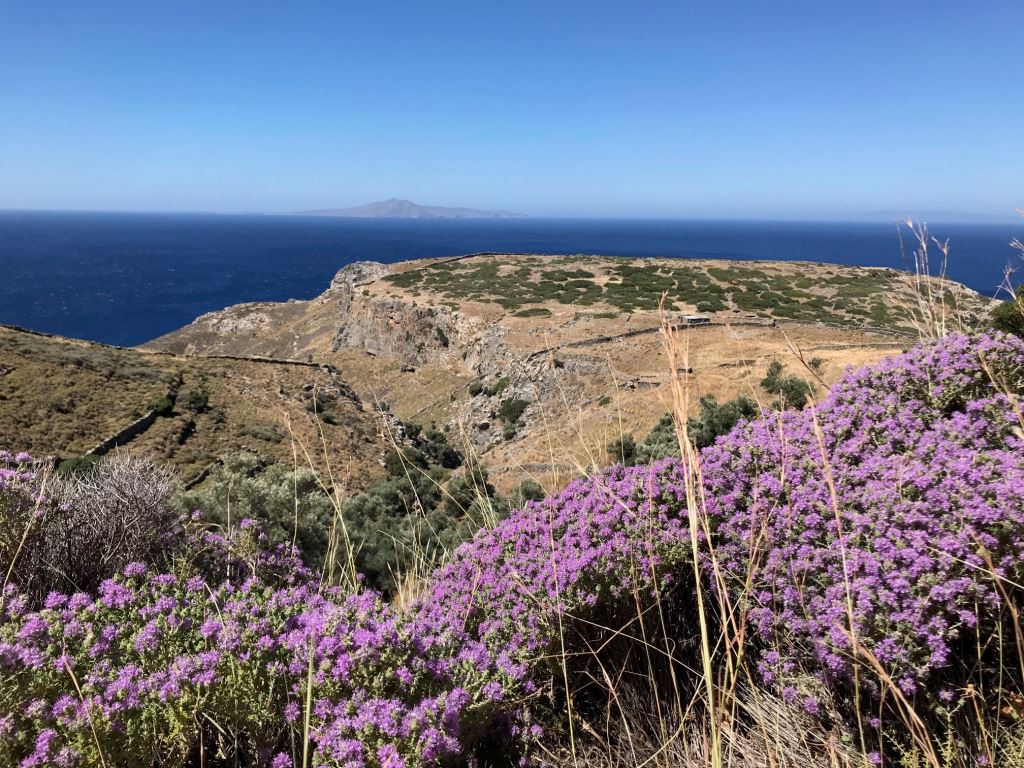
Student briefing
The regular dig team will be joined by 41 students, most of whom are from the University of Sydney. For many, this will be their first experience of an excavation and will count as credit towards their degrees. There aren’t many experiences offered to university students that give access to the most complete preserved Early Iron Age (Geometric Period) site in Greece, located on a spectacularly beautiful Cycladic island in the Aegean.
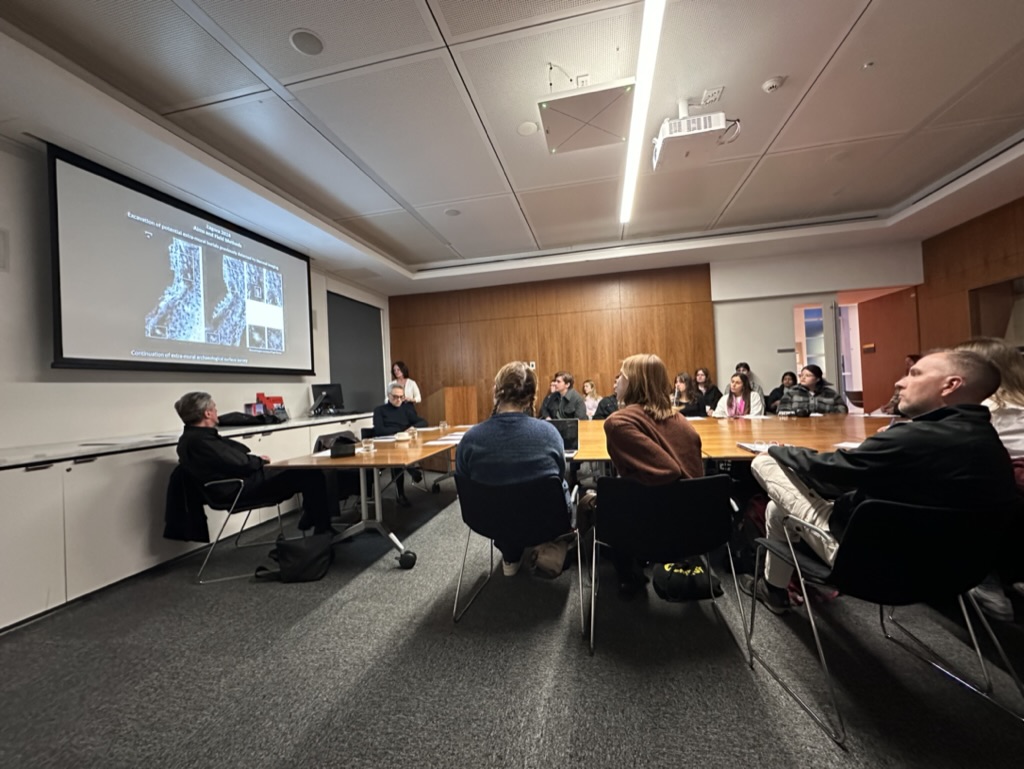
Supporters
The ZAP Co-Directors (L. A. Beaumont, P. F. Donnelly, and S. A. Paspalas) are grateful to the following for ongoing administrative and intellectual support:
Discipline of Archaeology, The University of Sydney
Australian Archaeological Institute at Athens
The Chau Chak Wing Museum at the University of Sydney
Aargus Pty Ltd
Departments and staff members of the Hellenic Ministry of Culture and staff of the Ephorate of Cycladic Antiquities
The Archaeological Museum of Chora (Andros)
Emerita Professor M. C. Miller (ZAP co-director to 2019)
For financial and in-kind support, we acknowledge:
The University of Sydney
Nicholas Anthony Aroney Trust
Aargus Pty Ltd
Harry Tamvakeras
John Chalmers
James Tsiolis
Alexander Zagoreos
